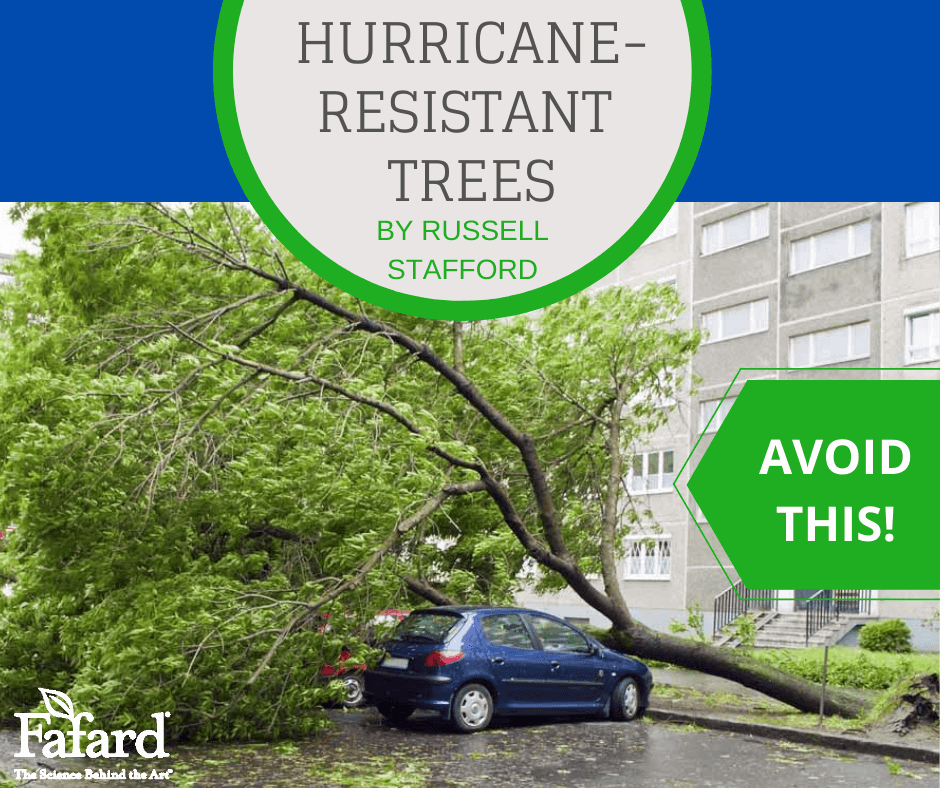

If you live in hurricane country –which encompasses just about any place in the U.S. within 100 miles of the Atlantic seaboard – the wrong tree in the wrong place can pose a major threat to life and property. This is something to keep in mind when you plan and plant your garden.
Hurricane-Resistant Tree Features
Of course, stronger hurricanes cause greater damage, all else being equal. But the potential impact of even a major hurricane can be tempered if you plant strong-rooted, wind-resistant trees in favorable positions.
Whatever trees you choose, they’ll be more hurricane-resistant if their roots have ample room. A tree’s root system typically spreads well beyond its canopy. Give it less, and it will be relatively weakly anchored and poorly nourished. A 30-foot-wide tree in a 15-foot-wide planting area is asking to become hurricane fodder.
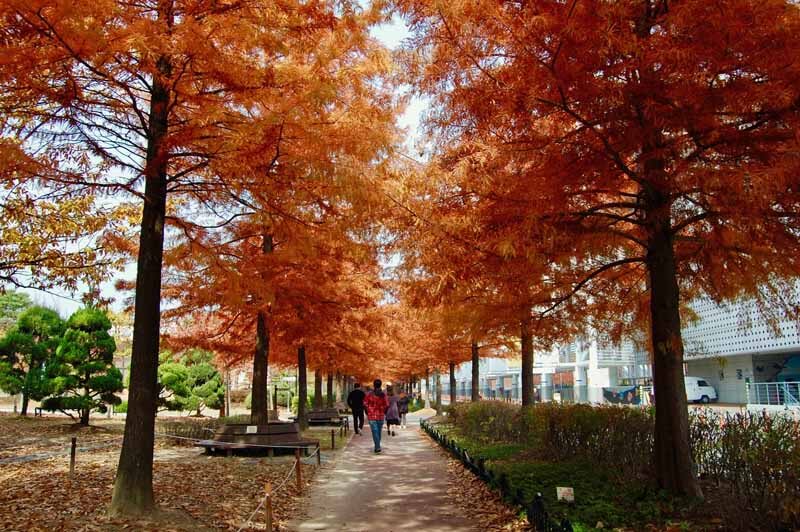
Soil depth also matters. If your soil is on the sandy or heavy side, your trees are likely to have relatively shallow roots. A yearly 1-inch mulch of Fafard® Premium Topsoil will help their roots grow denser and deeper. Be sure to mulch the whole root zone, if possible.
A tree’s crown size also influences its susceptibility to hurricane damage. Shorter trees afford the wind less leverage. Tree species and varieties of small to moderate size (15 to 30 feet) are not only less likely to topple, they also cause less damage if they do. This may seem self-evident, but it doesn’t prevent thousands of homeowners from planting large trees in potentially disastrous proximity to buildings, driveways, and other targets. Our advice: don’t.
Trees of all sizes benefit from companions. Groups of similarly sized trees – spaced at the width of their mature crowns – are relatively hurricane-resistant compared to singletons. Likewise, large trees – where appropriate – call for an underplanting of smaller, shade-tolerant trees and shrubs. In addition to being ecologically apropos, this planted understory will at least partially survive even a catastrophic hurricane.
A further factor to consider is the direction of the strongest hurricane winds – typically from the southeast or northeast. Niches sheltered from these winds (for example, to the west of a building) will suffer relatively light damage. Conversely, fully exposed sites are especially inappropriate for hurricane-susceptible trees.
Hurricane-Resistant Trees
Having chosen a good site for your tree, you’ll probably want to choose a relatively hurricane-resistant species. Studies of hurricane damage show that some tree species – including the following eastern U.S. natives – stand up particularly well to wind. Even better, some of these species come in compact forms that offer even greater hurricane resistance.

American hornbeam (Carpinus caroliniana): 25 to 40 feet tall; full to part sun; USDA Cold Hardiness Zones 3 to 9. This compact tree has smooth, fluted bark and exceptional fall color. It grows in the understory in the wild, but in cultivation, it is at its best in full sun and moist, fertile, friable soil. It is also known as blue beech and musclewood.
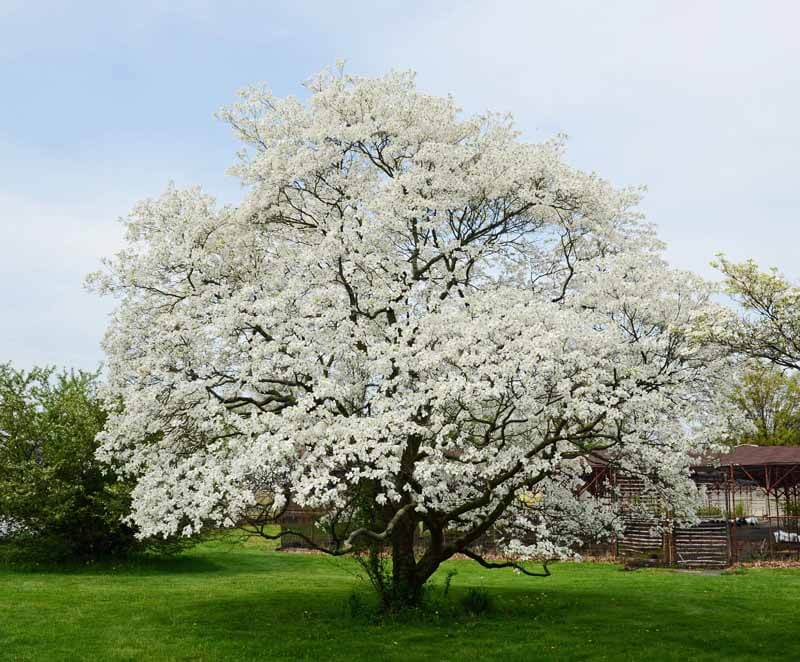
Flowering dogwood (Cornus florida): 20 feet; full to part sun; Zones 5 to 8. This common flowering tree offers white flowers in mid-spring, attractive scaly gray bark, and burgundy fall color. The many varieties of this old-time favorite include the pink-bloomed ‘Cherokee Brave’ and floriferous ‘Cloud 9’.

American holly (Ilex opaca): 30 to 40 feet; full sun to light shade; Zones 5 to 9. This tall, conical holly has spiny evergreen leaves and red berries on female plants, when a male pollenizer is present. Notable compact varieties include the yellow-fruited ‘Helen Mitchell’, variegated ‘Steward’s Silver Crown’ (female), and large-berried ‘Satyr Hill’.
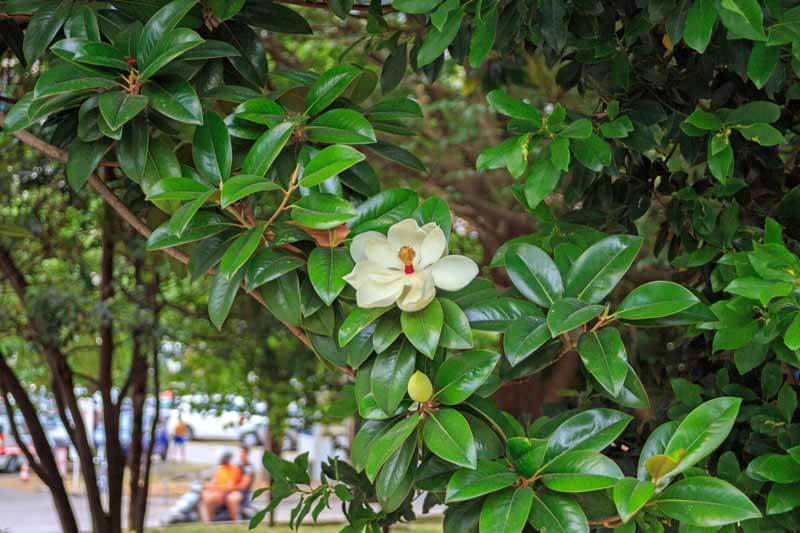
Southern magnolia (Magnolia grandiflora): 20 to 50 feet; full to partial sun; Zones 6 (for the hardiest cultivars) to 9. Broad lustrous evergreen leaves with fuzzy undersides and large waxy flowers in summer make this an exceptional landscape tree. Look for ‘Bracken’s Brown Beauty’, a compact, hardy form that matures at 25 to 30 feet and handles Zone 6 winters.
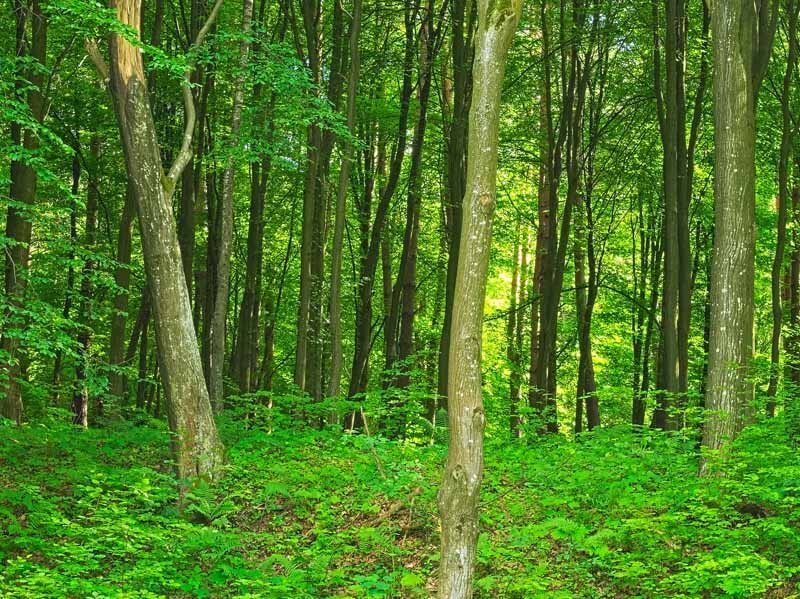
Hop hornbeam (Ostrya virginiana): 30 to 50 feet; full to partial sun; Zones 5 to 9. Reaching 25 to 40 feet when mature, this shaggy-barked understory native forms a dense oval-crowned specimen when planted in full sun. It has good gold fall color. It is also known as “ironwood”, for its strong densely grained trunk.
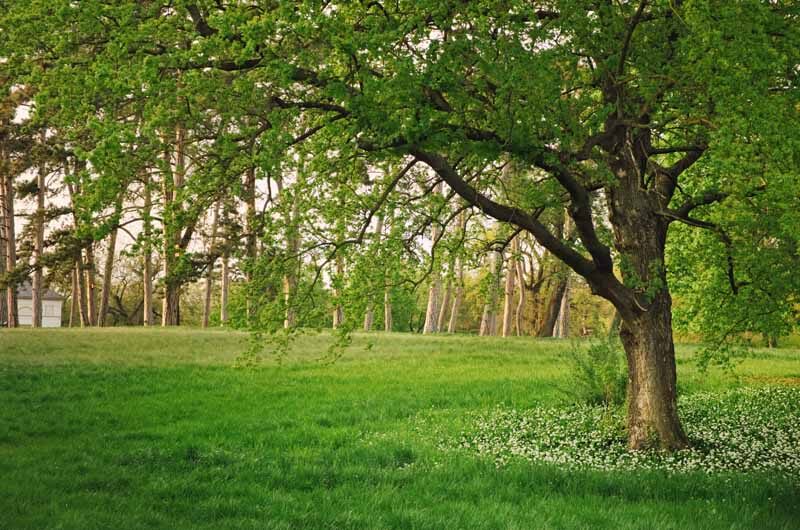
Shumard red oak (Quercus shumardii): 40 to 70 feet; sun; Zones 5 to 9. This handsome, deciduous U.S. native oak has pointy-lobed leaves that color wine-red in late fall or early winter. Its close relative, maple-leaved oak (Quercus acerifolia), features a compact habit and five-lobed, maple-like leaves. Shingle oak (Quercus imbricaria) is another good choice, offering relatively slow, compact growth (to 50 to 70 feet), shiny unlobed leaves, burgundy fall color, and Zone 4 to 8 hardiness.
Bald cypress (Taxodium distichum): 40 to 70 feet; sun to light shade; Zones 5 to 11. A strong constitution helps support this tree in high winds. It is a striking deciduous conifer with a conical habit and feathery foliage that goes burnt-orange in fall. (Read our recent bald cypress article for a description of more compact cultivars.)

